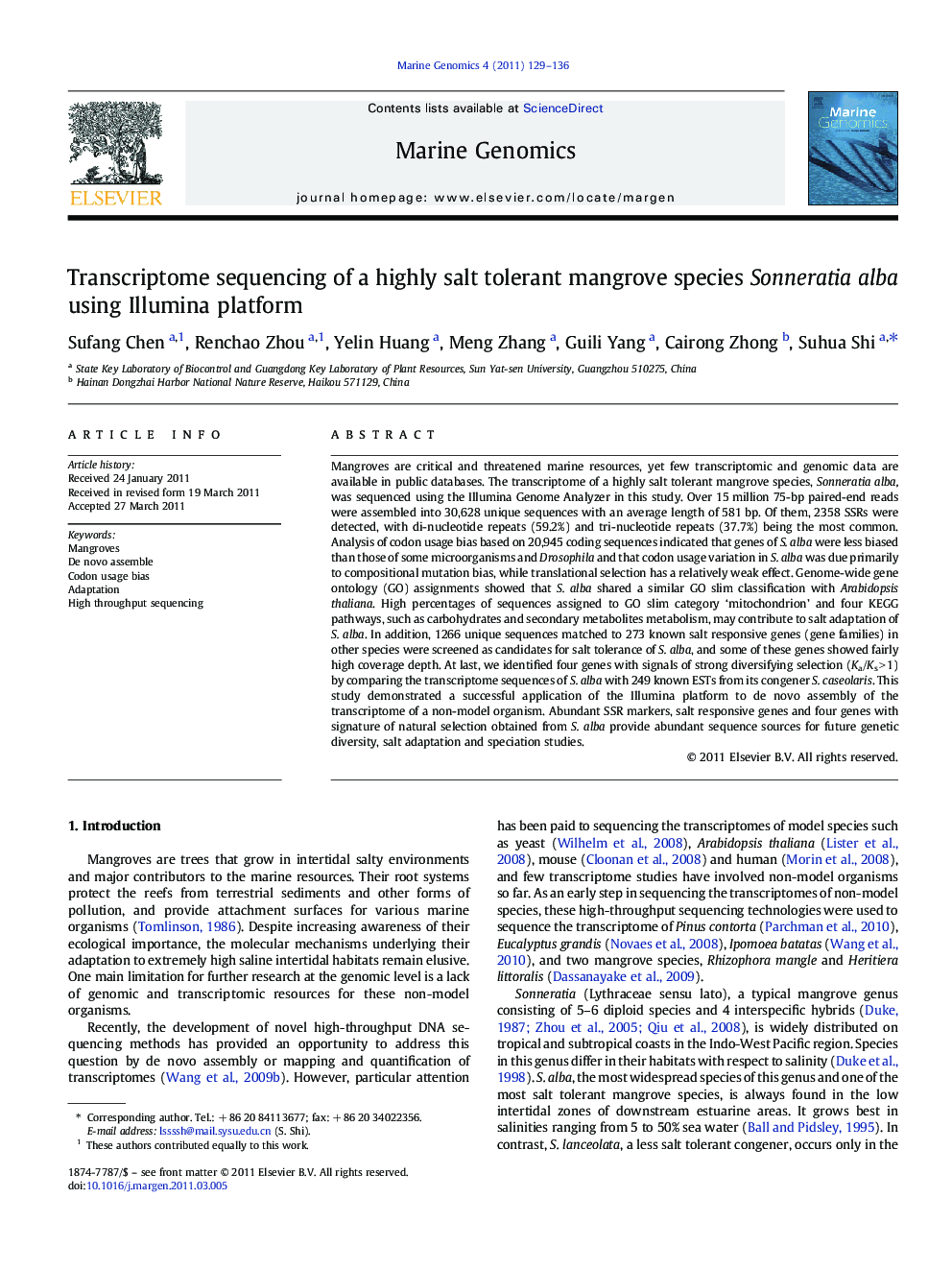| Article ID | Journal | Published Year | Pages | File Type |
|---|---|---|---|---|
| 2058385 | Marine Genomics | 2011 | 8 Pages |
Mangroves are critical and threatened marine resources, yet few transcriptomic and genomic data are available in public databases. The transcriptome of a highly salt tolerant mangrove species, Sonneratia alba, was sequenced using the Illumina Genome Analyzer in this study. Over 15 million 75-bp paired-end reads were assembled into 30,628 unique sequences with an average length of 581 bp. Of them, 2358 SSRs were detected, with di-nucleotide repeats (59.2%) and tri-nucleotide repeats (37.7%) being the most common. Analysis of codon usage bias based on 20,945 coding sequences indicated that genes of S. alba were less biased than those of some microorganisms and Drosophila and that codon usage variation in S. alba was due primarily to compositional mutation bias, while translational selection has a relatively weak effect. Genome-wide gene ontology (GO) assignments showed that S. alba shared a similar GO slim classification with Arabidopsis thaliana. High percentages of sequences assigned to GO slim category ‘mitochondrion’ and four KEGG pathways, such as carbohydrates and secondary metabolites metabolism, may contribute to salt adaptation of S. alba. In addition, 1266 unique sequences matched to 273 known salt responsive genes (gene families) in other species were screened as candidates for salt tolerance of S. alba, and some of these genes showed fairly high coverage depth. At last, we identified four genes with signals of strong diversifying selection (Ka/Ks > 1) by comparing the transcriptome sequences of S. alba with 249 known ESTs from its congener S. caseolaris. This study demonstrated a successful application of the Illumina platform to de novo assembly of the transcriptome of a non-model organism. Abundant SSR markers, salt responsive genes and four genes with signature of natural selection obtained from S. alba provide abundant sequence sources for future genetic diversity, salt adaptation and speciation studies.
Research highlights► The transcriptome of Sonneratia alba was de novo assembled. ► Codon usage bias was due primarily to compositional mutation. ► Candidate genes for salt adaptation were screened. ► Four genes of Sonneratia under diversifying selection were detected.
